We all have heard about the benefits of regularly practicing yoga. It not only improves mental and physical health but also helps with various concerns. Surprisingly, yoga can also aid in relieving constipation. Whether you struggle with difficulty in passing stool or experience severe stomach pain and irritation, yoga offers a natural solution to seek effective relief.
Constipation is a common issue that many people face. Its associated side effects, such as pelvic diseases and cancer, can be worrisome. However, it’s crucial to understand the significance of incorporating yoga poses for constipation relief. By practicing yoga, you can naturally prevent the recurrence of this condition. Here’s how you can naturally counteract constipation.
What is Constipation?
Constipation is a digestive disorder characterized by hardened bowels caused by insufficient water intake. This dry waste becomes stuck to the walls of the colon, making it challenging to pass. The symptoms of constipation include painful bowel movements, bloating, gas, and the development of fissures due to external pressure. Dealing with constipation can be excruciatingly painful and may result in a feeling of incomplete bowel movements.
Wind-relieving Pose Or Pavanmukta Asana:
This yogic posture helps relieve impure air in the stomach. It provides relief from bloating and gas, as well as improves lung function. Additionally, it can alleviate knee pain and backbone pain. However, pregnant individuals should avoid attempting this asana.

How to Do:
- Start by lying down on your back and stretching your legs.
- Bend your left knee and hold it tightly with both hands, pressing the knee towards your stomach.
- Keep your right leg straight.
- Repeat the same process with your right knee and then with both knees.
- Remember to maintain normal breathing throughout the practice. This asana helps keep the stomach clean and can ease constipation.
It is important to note that pregnant individuals should refrain from performing this yoga pose.
How Does This Pose Help to Relieve From Constipation?
This pose helps in releasing trapped wind from the body. It also stimulates bowel movements and strengthens the pelvic area. Moreover, it improves digestion and is considered one of the most effective yoga asanas for relieving constipation. However, it is important to note that pregnant women should avoid performing this yoga pose due to certain precautions.
Vajra Asana:
This asana is considered one of the easiest and most effective poses for treating constipation. It is also known as the adamanet pose and provides significant benefits for strengthening the digestive organs.
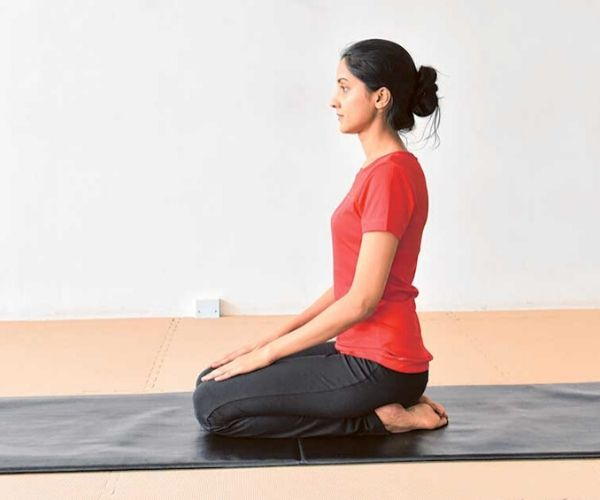
How to Do:
- Start by bending both knees and sitting with your buttocks on your heels.
- Place your palms on your knees.
- Keep your head and back straight without any stiffness.
How Does This Pose Help to Relieve From Constipation?
The adamanet pose helps relieve constipation by preventing it, increasing digestive powers, and preventing indigestion. Additionally, it strengthens the calf, knee, and thigh muscles. This asana is also beneficial for individuals experiencing waist and neck pain, as well as those who struggle with anger, anxiety, and stress.
However, it is important to note that if you have severe rheumatism or arthritis, you should avoid attempting this asana due to the potential strain it may cause on your joints.
Plough Pose Or Halasana:
Halasana, also known as the Plough pose, is a challenging yoga pose recommended for advanced practitioners. It requires some effort to perform correctly, but once mastered, it can be a beneficial tool for relieving constipation.
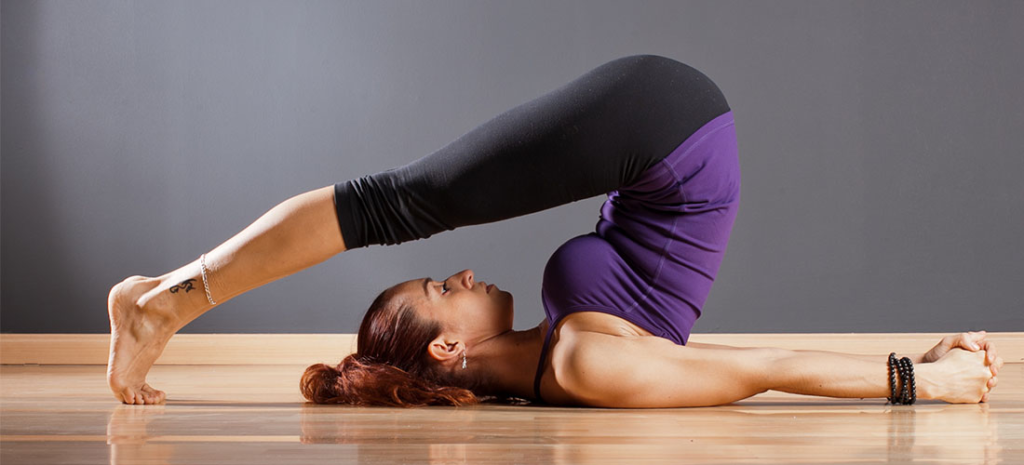
How to Do:
- Start by lying on your back with your arms placed beside you and palms facing downwards.
- Inhale deeply and engage your abdominal muscles to lift your legs off the floor.
- Gradually lower your legs towards the ground, aiming for a 180-degree angle.
- Gently touch your toes to the floor while being mindful of not straining your neck.
How Does This Pose Help to Relieve From Constipation?
The Plough pose helps alleviate constipation by stimulating bowel movements in the digestive tract. Additionally, it massages the abdominal muscles, which can aid in releasing trapped gas. Furthermore, practicing Halasana can provide relief from stress and fatigue.
However, it’s important to take precautions before attempting Halasana. If you have a severe back or neck injury, an enlarged thyroid, or heart conditions, it is advised to avoid this pose to prevent any potential harm.
In conclusion, Halasana is a challenging yoga pose that, when performed correctly, can be beneficial for relieving constipation. Remember to approach this pose with caution and seek guidance from a qualified yoga instructor if needed, especially if you have specific health concerns.
Balasana or Child’s Pose:
Balasana, also known as Child’s resting pose, is a yoga posture that mimics the position of a fetus in the womb. This pose is beneficial for releasing stress from the body and preventing constipation.
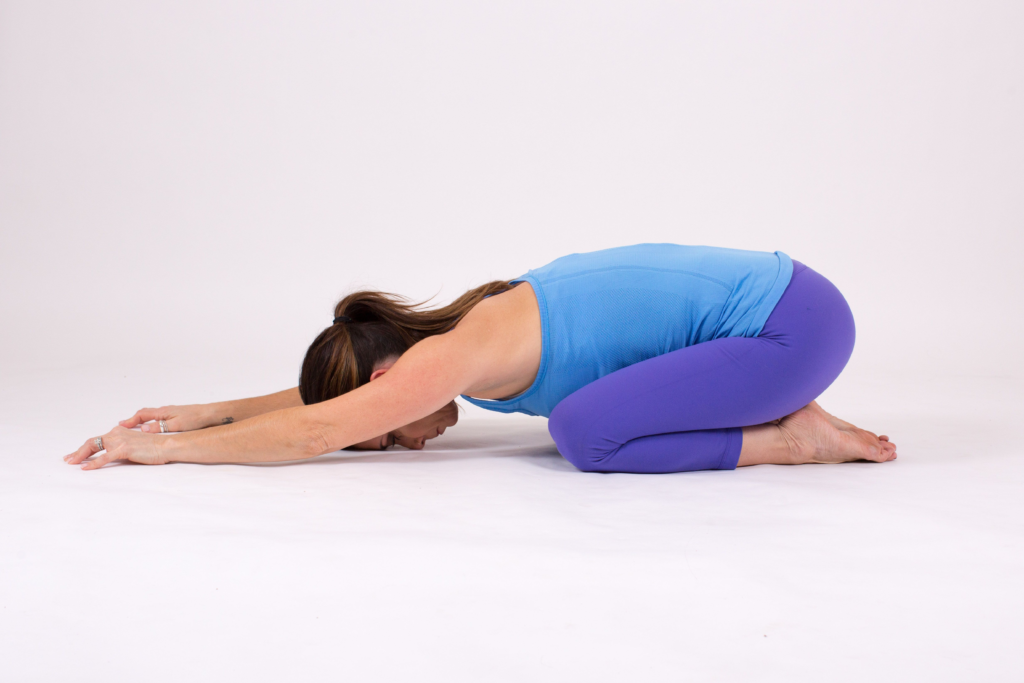
How to Do:
- Start by kneeling on the floor with your buttocks resting on your heels.
- Slowly bend forward and extend your arms in front of you with your palms facing down.
- Hold this position while breathing normally and stretch your body away from your arms.
- Repeat this pose as desired.
How Does This Pose Help to Relieve From Constipation?
Balasana can help relieve constipation by massaging the internal organs and promoting proper bowel movements. It also reduces tension in the abdominal muscles and aids in the release of trapped gas.
However, individuals with severe knee injuries should seek advice from a healthcare professional before attempting this asana to ensure their safety.
Supta Matsyendarasana:
This asana, also known as the Supine twist or the Reclining twist, strengthens the spinal area and improves digestion. Despite being relatively unknown, it is easy to perform and effectively treats irritable bowel movements.
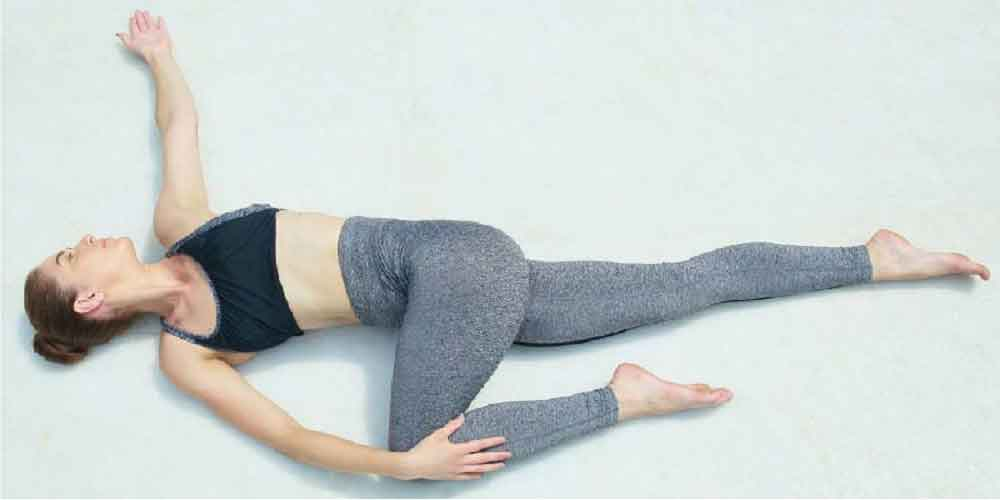
How to Do:
- Start by lying on your back.
- Fold your left leg and place it on your right leg.
- Stretch your left arm and rest your right arm on your left leg.
- Alternate the positions of your legs and repeat the asana.
How Does This Pose Help to Relieve From Constipation?
The Supine twist pose aids in detoxifying the body by eliminating waste and promoting digestion. It specifically targets the abdominal muscles, making it an excellent choice for reducing constipation.
When performing this pose, it is important to note that you should not experience any pain or discomfort. If you do, double-check your posture to ensure it is correct. Additionally, if you have had surgery in your back or hips, it is advisable to avoid this asana.
BadhaKonasana:
BadhaKonasana, also known as the Cobbler pose, is a simple Yoga asana that offers numerous benefits for constipation. This pose, resembling the movements of a fluttering butterfly, can be quite effective in relieving constipation.
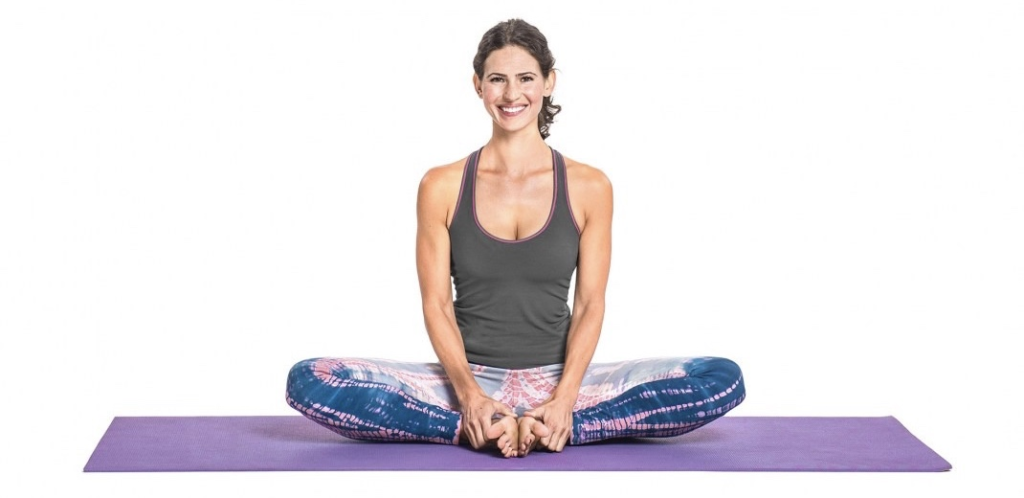
How to Do:
- Begin by sitting straight on the floor in an erect position.
- Bring your heels forward to touch your pelvic area.
- Use your arms to gently touch the feet and maintain that position.
How Does This Pose Help to Relieve From Constipation?
This pose works by strengthening the pelvic area and enhancing the digestive system. It can also stimulate the kidneys to function properly and promote smooth bowel movements. Additionally, BadhaKonasana is beneficial for alleviating stress and fatigue, making it a great posture to practice.
It’s important to note that if you suffer from sciatica, it is advisable to sit on a pillow while performing this pose to provide extra support. Moreover, BadhaKonasana is considered one of the best yoga poses for relieving constipation during pregnancy.
Ardha Matsyendrasana (Half Lord of the Fishes Pose):
This pose is known as the half spinal twist or Ardha Matsyendrasana. It is similar to the Supine twist, but with only a half twist. The pose is often referred to by this name. It is considered one of the best yoga poses for relieving constipation.
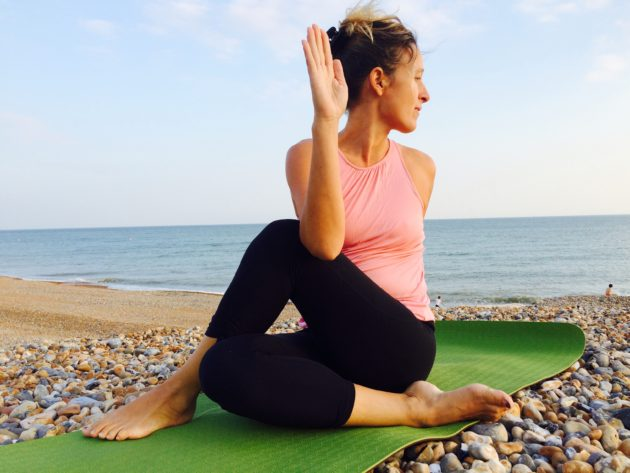
How to Do:
- Start by sitting on the floor.
- Gently fold your left leg and place it on the right leg.
- Twist your spine in the opposite direction, including your neck.
- Place your right hand on the left leg and your left hand on the floor. Alternatively, you can repeat the asana by alternating the legs.
How Does This Pose Help to Relieve From Constipation?
The Half Spinal Twist pose helps relieve constipation by toning the abdominal muscles and facilitating the movement of waste matter in the digestive system. It also promotes the production of digestive enzymes, aiding in better digestion. Additionally, this pose helps promote smooth bowel movements and prevents constipation.
However, it is important to note that individuals with spinal cord concerns or pain should avoid performing this yoga pose as a precautionary measure.
Peacock Pose:
Also known as Mayurasana, this pose is called the peacock stand in yoga. It may be challenging and difficult to perform, but it offers numerous benefits for the body’s flexibility and can be particularly helpful for treating bowel syndromes and concerns.
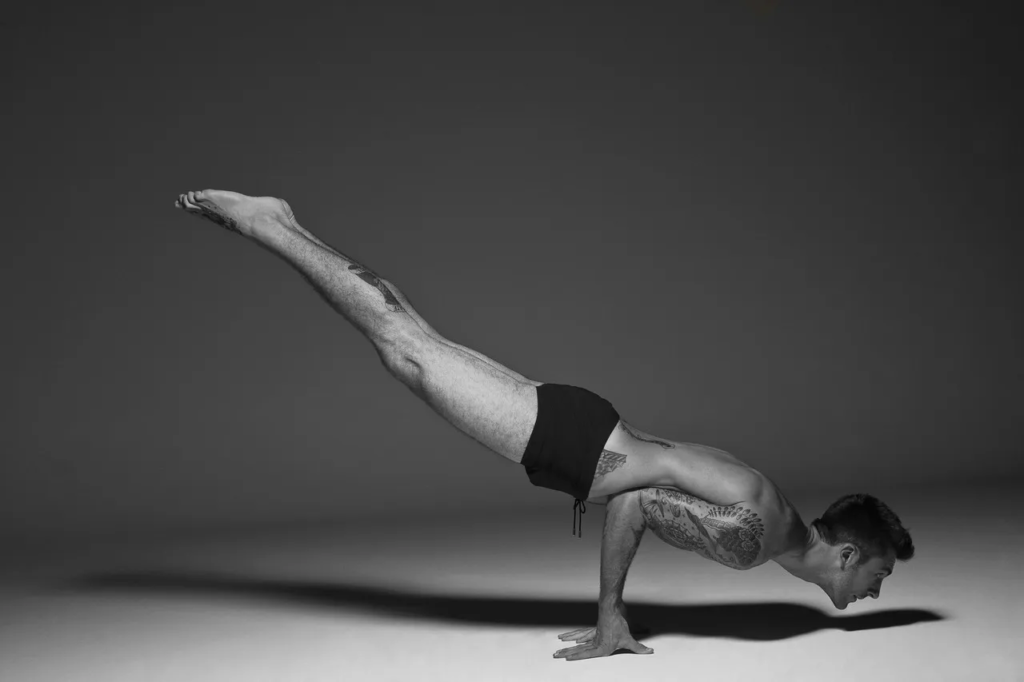
How to Do:
- Begin by kneeling on a yoga mat and widening your knees apart.
- Place your hands gently in front of you on the ground, with fingers pointing towards your body and facing backward.
- Bend your elbows and tuck them into your abdomen.
- Slowly stretch your legs one by one to bring your body into a straight line, lift your legs up, and aim to hold the pose for at least 30 seconds.
How Does This Pose Help to Relieve From Constipation?
Mayurasana, or the peacock pose, has specific benefits for relieving constipation. This flexible yoga asana works wonders for treating intestinal problems by promoting a healthy digestive system and tract. It helps to free up the flow of fluids, allowing for smoother bowel movements.
While practicing Mayurasana, it’s essential to take precautions. If you have had any injuries or surgeries in your wrists, shoulders, or elbows, it is advisable to avoid performing this asana to prevent any further strain or discomfort. It’s always best to consult with a qualified yoga instructor or healthcare professional before attempting any challenging yoga poses, especially if you have any pre-existing conditions or concerns.
Dhanurasana:
The popular Dhanurasana, also known as Bow pose, is an ancient technique that can facilitate bowel movements and help treat gas and intestinal problems. To perform this pose, start by lying flat on the ground on your stomach. Gradually bend your knees and reach your arms back to clasp your ankles. Slowly raise your chest off the floor, lifting your thighs and upper body as well. Hold this position for a few seconds and then release.
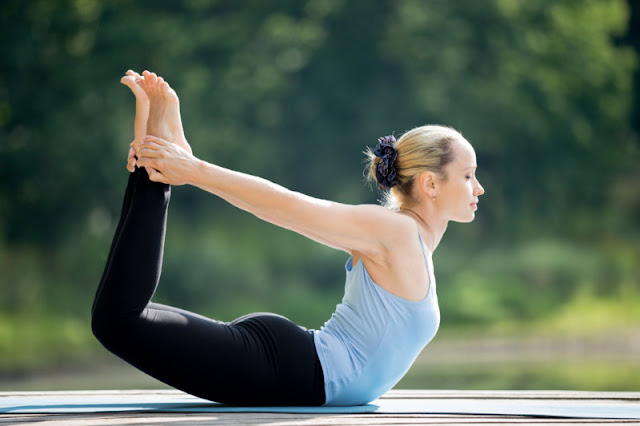
How to Do:
- Dhanurasana, also known as Bow pose, can help relieve constipation.
- It improves flexibility in the bowel region, reducing bloating and gas.
- Consult with medical professionals if you have hernias or heart concerns before attempting this pose.
How Does This Pose Help to Relieve From Constipation?
By practicing Dhanurasana, you can experience the benefits of enhanced digestion and relief from gastrointestinal discomfort. It is essential to perform this pose correctly and take precautions if you have any underlying health conditions.
Always consult with a healthcare professional before starting a new exercise or yoga routine.
Trikonasana (Triangle Pose):
Trikonasana is a yoga pose that offers several benefits, including improving digestion and reducing constipation. It achieves this by stimulating the abdominal organs and promoting bowel movements. However, it’s crucial to be mindful of your body’s limits and avoid pushing yourself too hard. If you feel any discomfort or pain during the pose, it’s best to come out of it slowly and gently. Moreover, if you have any pre-existing medical conditions or injuries, it’s advisable to consult with a healthcare professional before attempting Trikonasana or any other yoga pose.
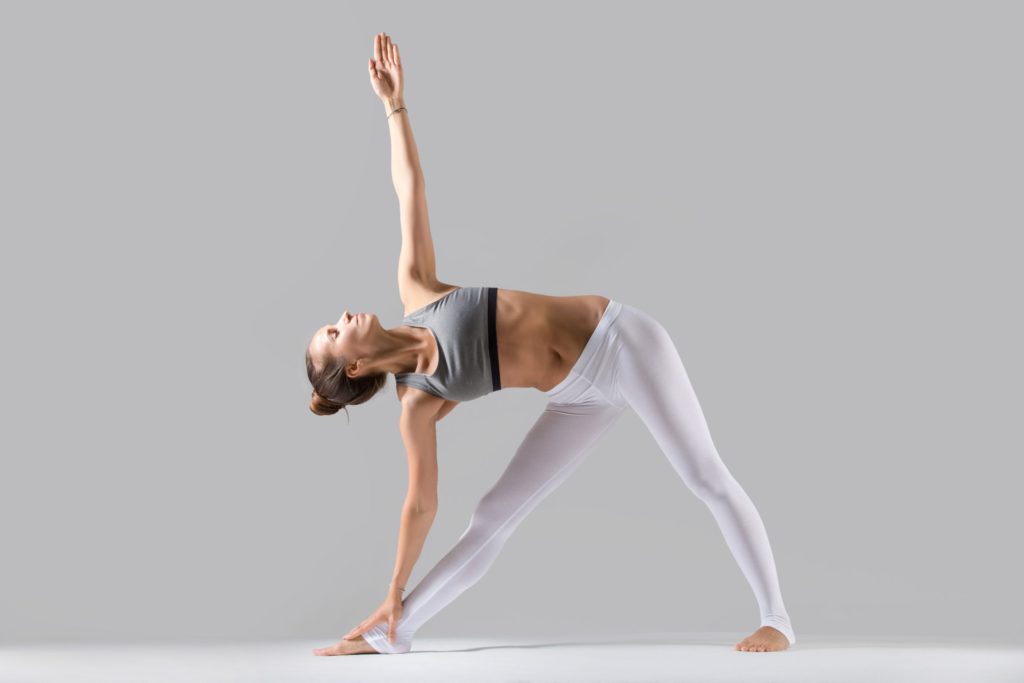
To begin, stand at the top of your mat, ensuring that your feet are hip-width apart. Take a step back with your left foot, approximately 3-4 feet, and rotate it 90 degrees so that it aligns parallel to the back edge of the mat. Inhale deeply as you raise your arms to shoulder height, making sure your palms are facing downward. As you exhale, hinge at your hips and lower your right hand towards your right ankle or the floor. Simultaneously, extend your left arm upward, reaching towards the ceiling.
Maintain your focus on your left hand while holding the pose for 30 seconds to 1 minute. Throughout, remember to breathe deeply and steadily, allowing your body to relax. When you’re ready to exit the pose, inhale and gradually lift your torso back up to a standing position. Repeat the entire sequence on the other side to experience the full benefits of Trikonasana.
